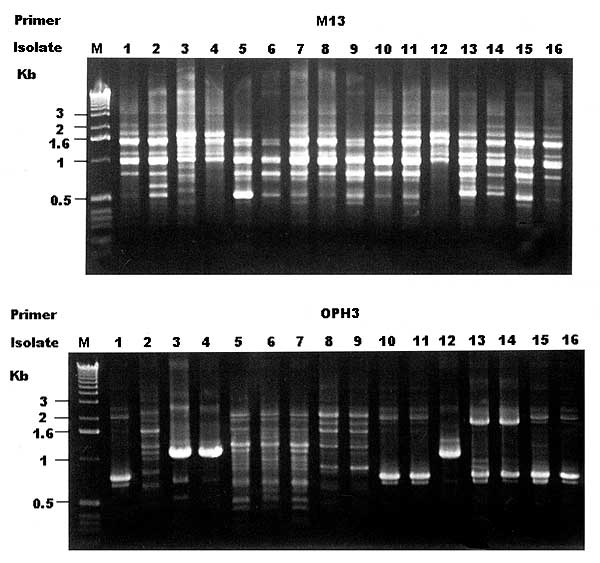Volume 7, Number 3—June 2001
Research
Melioidosis: An Emerging Infection in Taiwan?
Figure 2

Figure 2. . Random amplified polymorphic DNA (RAPD) patterns of 16 isolates of Burkholderia pseudomallei generated by arbitrarily primed polymerase chain reaction with the primers M13 (upper panel) and ERIC1 (lower panel). Lanes: M, molecular size marker; 1, isolate A; 2, isolate B; 3 and 4, isolates C1 and C2; respectively; 5 to 9, isolates D1 to D5; 10 and 11, isolates E1 and E2, respectively; 12, isolates G; 13 and 14, isolates F1 and F2, respectively; and 15 and 16, isolates H1 and H2, respectively. (See Table 3 for designation of isolates).
Page created: April 26, 2012
Page updated: April 26, 2012
Page reviewed: April 26, 2012
The conclusions, findings, and opinions expressed by authors contributing to this journal do not necessarily reflect the official position of the U.S. Department of Health and Human Services, the Public Health Service, the Centers for Disease Control and Prevention, or the authors' affiliated institutions. Use of trade names is for identification only and does not imply endorsement by any of the groups named above.